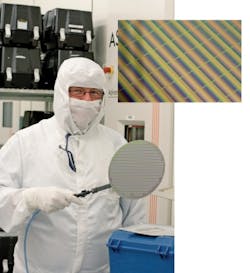Dual-wavelength technique removes discoloration in laser-based artwork restoration
While the effectiveness of laser-based cleaning methods for historic paintings and sculptures cannot be disputed, a discoloration or "yellowing" effect has been noticed when IR laser wavelengths are used on certain artworks composed of stone materials including marble, gypsum, and limestone. Specifically, nanosecond pulses from a 1064 nm Q-switched Nd:YAG laser can remove outer pollution layers, but may cause discoloration either due to the irradiation itself or as a result of revealing yellowed layers underneath due to migration of particular chemicals into the stone surfaces.
Image courtesy of the Greek Ministry of Culture. |
Although the exact cause of the yellowing effect is being debated, researchers at the Institute of Electronic Structure and Lasers (IESL) in the Foundation for Research and Technology-Hellas (FORTH) in Greece (Heraklion, Crete) experimented with both sequential and synchronous illumination at various fluence levels for a 1064 nm laser and both its second and third harmonics at 532 and 355 nm before determining that an optimum recipe consists of synchronous illumination of 1064 nm and 355 nm wavelengths. Apparently, the 1064 nm wavelength is effective at removing all crusts and pollution, while the 355 nm wavelength effectively corrects discoloration; neither wavelength performs adequately on its own. Contact Paraskevi Pouli at[email protected].
More Laser Focus World Current Issue Articles
More Laser Focus World Archives Issue Articles

